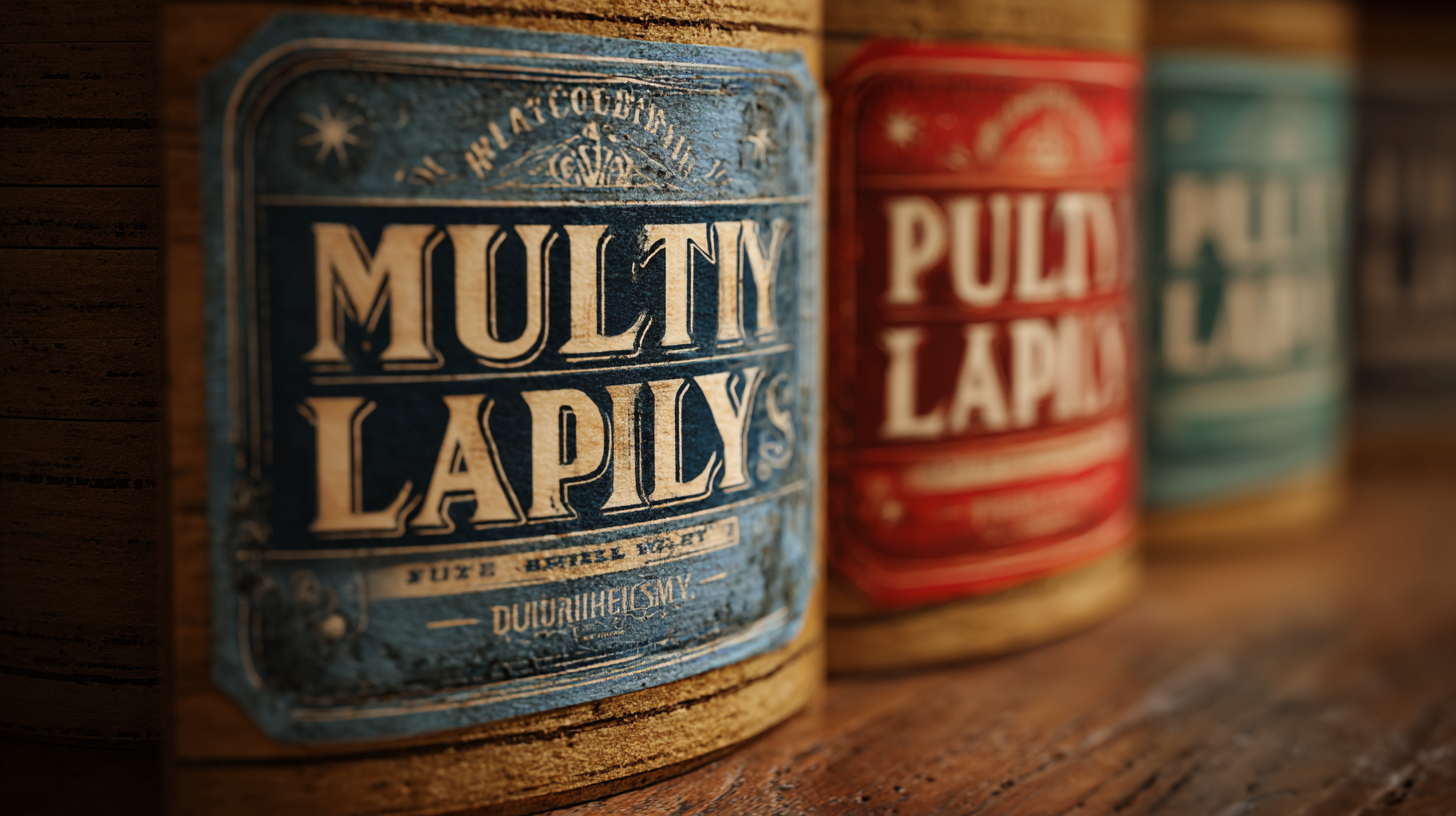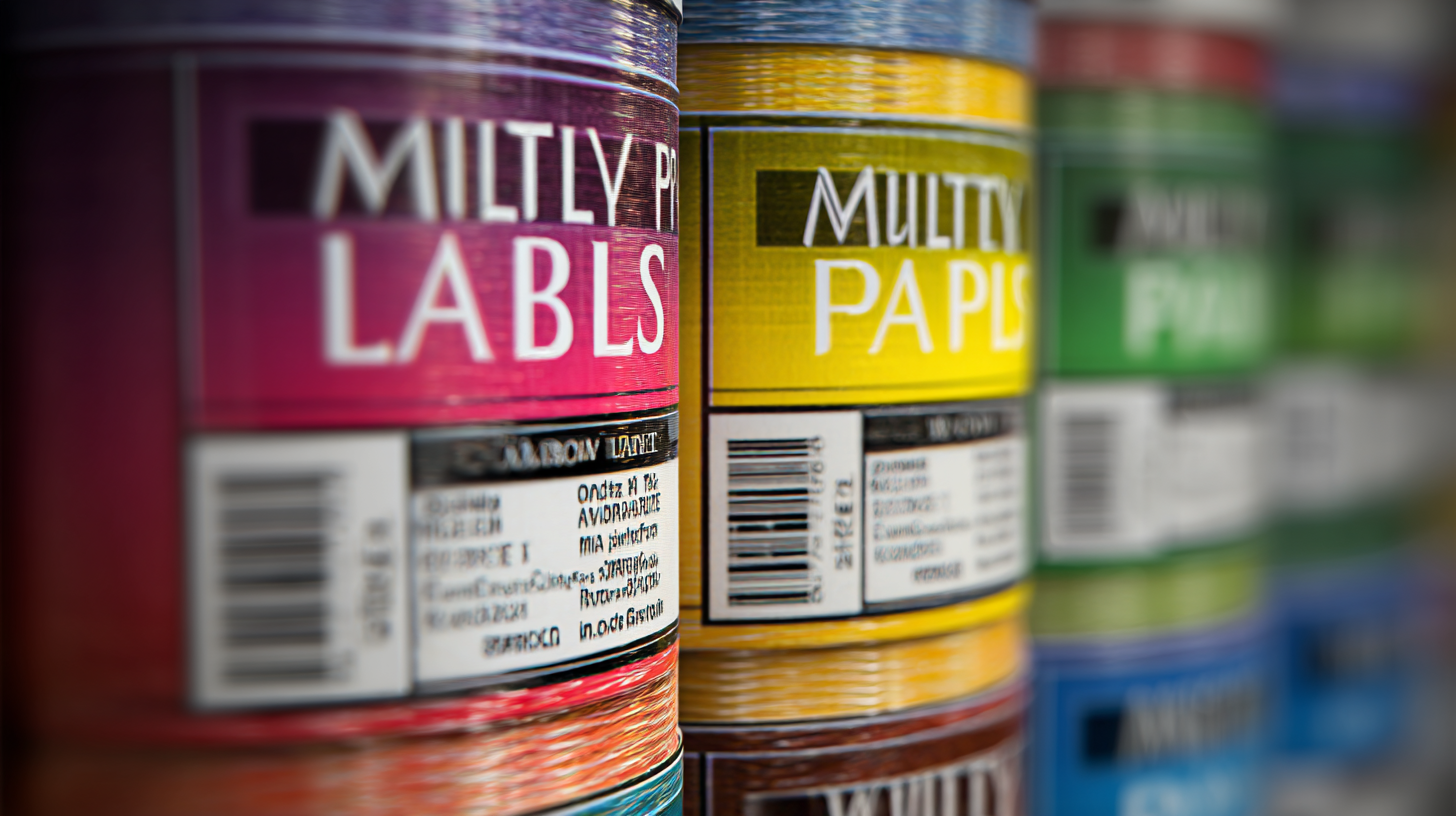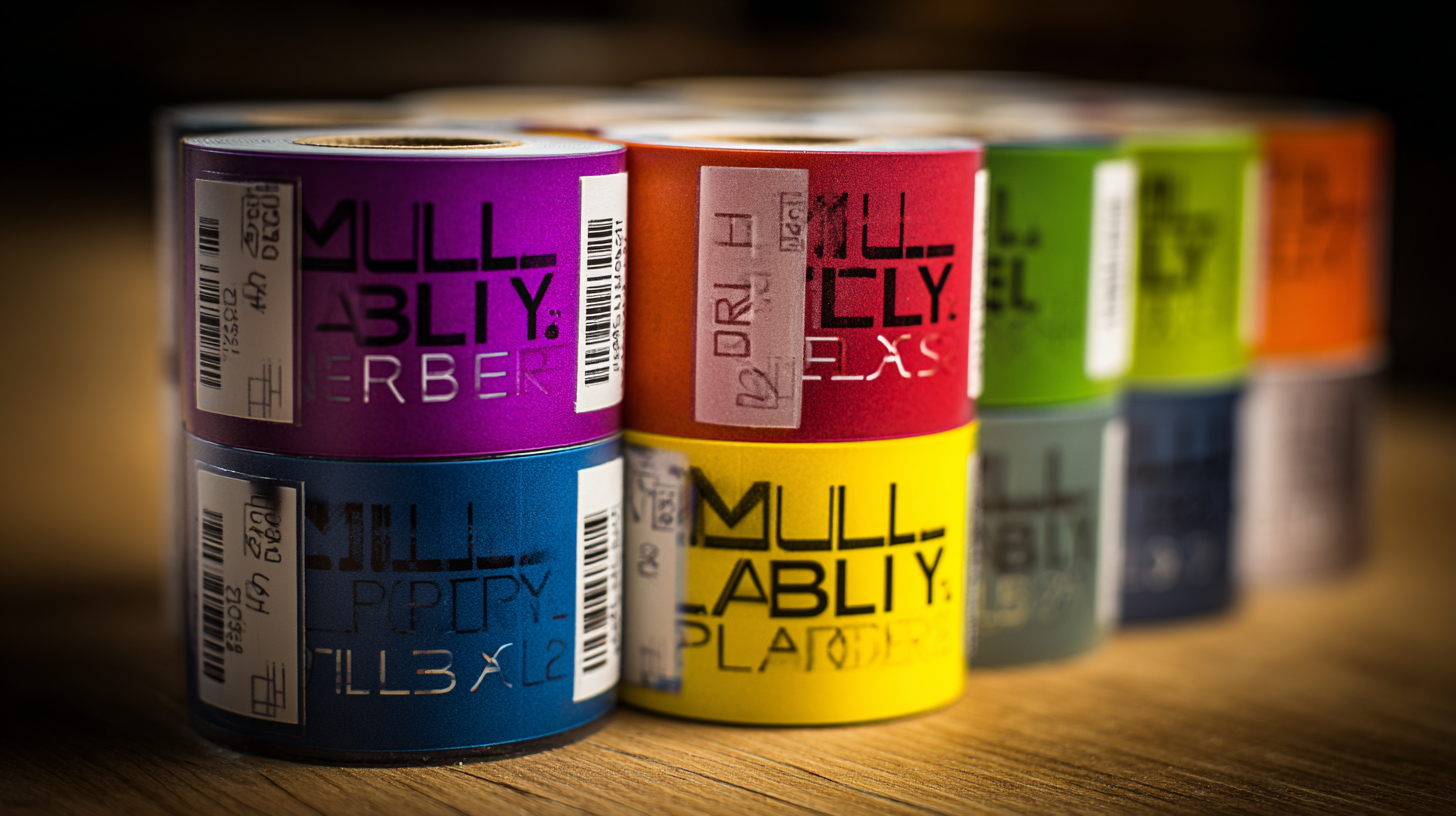The Ultimate Guide to Choosing the Best Multi Ply Labels for Your Business Needs
In the rapidly evolving landscape of modern manufacturing, the demand for high-quality labeling solutions has never been greater. Multi Ply Labels, known for their durability and versatility, play a critical role in various sectors, including logistics, warehousing, and retail. According to a recent report by Smithers Pira, the global market for specialty labels, which includes Multi Ply Labels, is projected to reach $24.8 billion by 2024, growing at a CAGR of 5.3%. This growth highlights the increasing importance businesses place on effective branding, product information, and compliance with regulations. As companies strive to optimize their products and strengthen their market presence, understanding the intricacies of Multi Ply Labels becomes essential for selecting the right options that meet their unique operational needs. This guide aims to navigate through the multifaceted landscape of Multi Ply Labels, equipping you with the insights necessary for making informed decisions that align with your business goals.

Understanding Multi Ply Labels: Types and Applications for Different Industries
When it comes to choosing the right multi-ply labels for your business, understanding the different types and their applications across various industries is crucial. Multi-ply labels are designed to provide additional layers for more information and functionality, making them ideal for shipping, inventory management, and promotional purposes. For instance, in the food industry, these labels can offer essential product details and safety information while maintaining an attractive presentation.
Tip: Analyze your specific label needs based on your industry requirements. For example, if you're in logistics, consider using thermal transfer labels that are durable and can withstand environmental factors, whereas in retail, vibrant colors and clear graphics can enhance product visibility and appeal.
Moreover, the adhesive type is essential in selecting the right multi-ply label. Permanent adhesives work well for applications that require a long-lasting bond, while removable options are suitable for temporary needs, like promotional materials or packaging.
Tip: Conduct a test with different adhesives to determine which performs best under your operational conditions, ensuring your labels stay intact and legible throughout their usage.
The Ultimate Guide to Choosing the Best Multi Ply Labels for Your Business Needs
| Label Type |
Application |
Industry |
Durability |
| Standard Multi Ply |
Shipping Labels |
Logistics |
Moderate |
| Direct Thermal Multi Ply |
Inventory Management |
Retail |
Low |
| Thermal Transfer Multi Ply |
Product Labels |
Manufacturing |
High |
| Waterproof Multi Ply |
Outdoor Use |
Food & Beverage |
Very High |
| Eco-Friendly Multi Ply |
Sustainable Packaging |
Consumer Goods |
Moderate |
Key Factors to Consider When Choosing Multi Ply Labels for Your Business
When choosing multi-ply labels for your business, several key factors should be taken into consideration to ensure you select the best option for your needs. First and foremost, assess the specific application of the labels. Will they be used for product information, promotional purposes, or compliance details? Understanding the primary function will guide you in selecting the right material and adhesive type that can withstand various environments and conditions.
Another crucial factor is the printing technology you plan to use. Some multi-ply labels are compatible with digital printing, while others may require flexographic or offset printing. It's essential to confirm that your chosen labels will work seamlessly with your existing printing systems to maintain quality and efficiency.
**Tip:** Always request samples before making a bulk purchase. This allows you to test the labels in real-world scenarios, ensuring they adhere correctly and maintain quality over time.
**Tip:** Consider the environmental impact of your labels. Opting for sustainable materials not only enhances your brand image but can also appeal to eco-conscious consumers. Look for options that offer recyclable or biodegradable finishes.
The Ultimate Guide to Choosing the Best Multi Ply Labels for Your Business Needs
Comparing Different Materials for Multi Ply Labels: Pros and Cons
When selecting multi-ply labels for your business needs, understanding the
materials used can significantly influence your choice. Multi-ply labels typically come in materials such as paper, vinyl, and polyester, each offering unique advantages and drawbacks. For instance, paper labels are cost-effective and environmentally friendly, making them a popular choice for short-term applications. However, they may lack the durability required for products exposed to moisture or chemicals. On the other hand, vinyl labels provide superior durability and waterproof resistance, making them ideal for long-lasting applications, though they often come at a higher price point.

Recent advancements in labeling technology, including the application of
nanotechnology,
have introduced novel materials that enhance label functionality. The integration of
nanoparticles into label substrates
can improve durability and resistance to environmental factors, thereby prolonging the label's lifespan. Additionally,
current trends in label production emphasize
the importance of sustainable materials, as per recent industry reports indicating that nearly
60% of consumers prefer products with eco-friendly packaging.
This shift towards sustainability highlights the necessity for businesses to consider not just the label's appearance and cost but also its environmental impact and performance under varying conditions.
Best Practices for Designing Multi Ply Labels to Maximize Impact
Designing multi-ply labels can be a game changer for your business, allowing you to convey more information while maintaining a compact and appealing format. To maximize the impact of your labels, start with a clear hierarchy of information. Your brand name and essential details should be prominently displayed, using larger and bolder fonts. Subheadings or secondary details can follow in smaller sizes, guiding the viewer's eye through the layers of content without overwhelming them. Color contrast is crucial; utilize complementary colors to ensure readability and make key messages stand out.
In addition to typography and color, consider the material and finish of your multi-ply labels. A high-gloss finish can enhance visual appeal, while matte options offer a more subtle, sophisticated look. Incorporating textures or embossed elements can add tactile interest, enticing customers to interact with the product. Don’t forget to leverage effective imagery to reinforce your brand message—whether through graphics or logos, visuals should align with your brand identity and resonate with your target audience. By thoughtfully designing your multi-ply labels, you can create a powerful marketing tool that not only attracts attention but also communicates your brand’s story effectively.
Common Mistakes to Avoid When Selecting Multi Ply Labels for Your Needs
When selecting multi-ply labels for your business, avoiding common pitfalls is essential for achieving optimal results. One frequent mistake is underestimating the importance of material quality. According to a report by the Label Manufacturers Institute, using subpar materials can result in label failures that may cost companies 25% more in rework and replacements. Prioritizing high-quality durable materials ensures that the labels withstand environmental stress and remain legible over time.
Another typical oversight is neglecting to assess the specific needs of your application. For instance, labels used for industrial purposes may require different adhesives compared to those intended for food packaging. An industry analysis by Smithers Pira indicates that incorrect adhesive selection can diminish the lifespan of labels, leading to decreased customer satisfaction.
Tip: Always request samples from manufacturers to test durability and adhesion before committing to a large order.
Additionally, businesses often fail to consider the printing capabilities of their chosen labels. Not all printers can handle multi-ply materials effectively, which may lead to production delays and increased costs. A study from the Flexible Packaging Association highlights that proper alignment between label design and printing technology can increase printing efficiency by up to 30%.
Tip: Collaborate with your label supplier to ensure compatibility with your existing printing systems for a seamless workflow.







